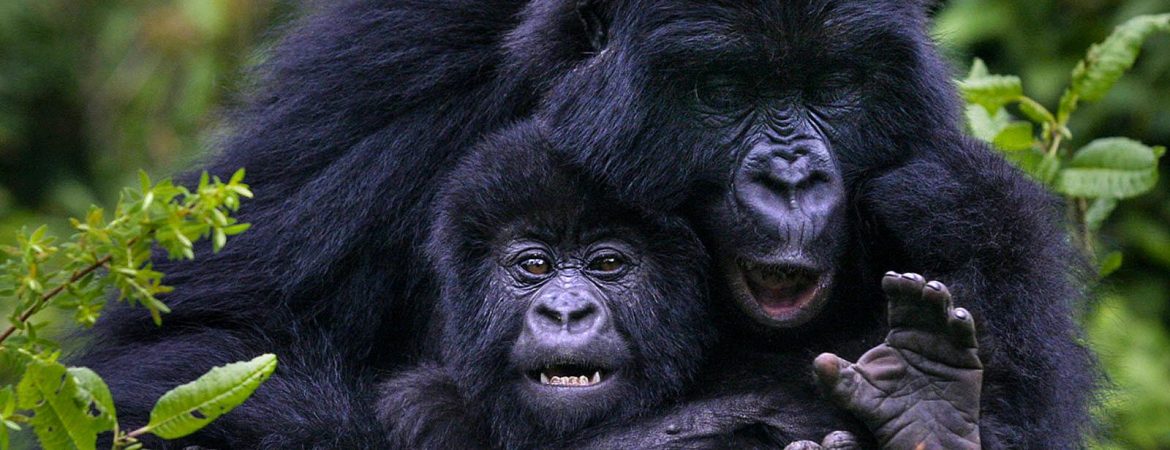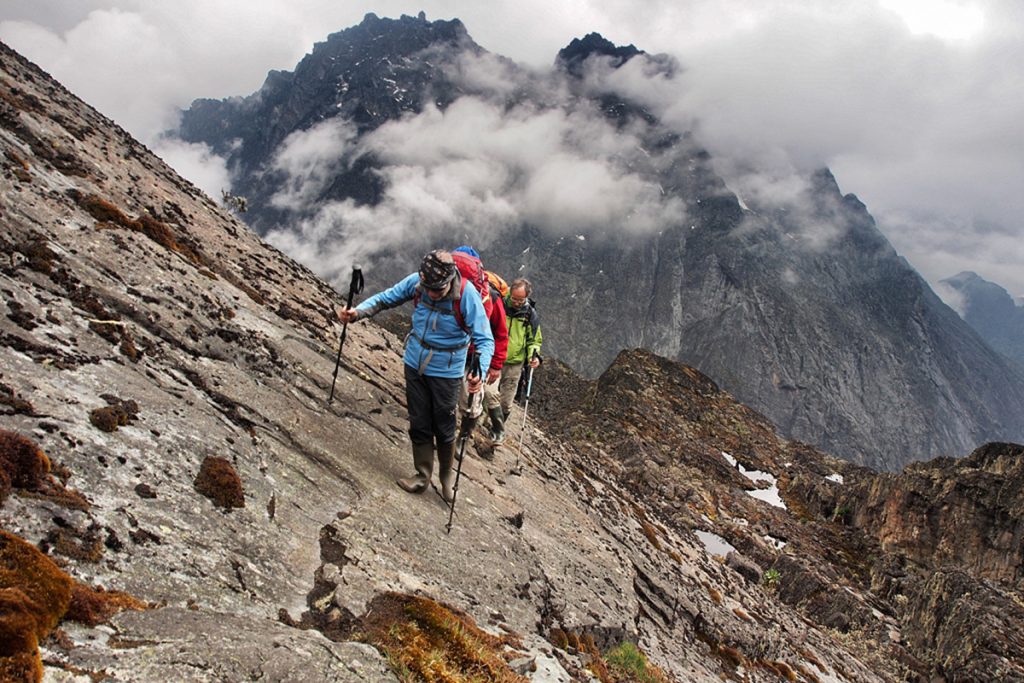What Makes Uganda A Unique And Famous Safari Destination? Are you planning a Safari trip to Uganda and wondering what Uganda is famous for as an African safari destination? Uganda is a unique safari destination because it has all of the savannah wild game, primates in its pristine rainforest jungles (especially more than half of the world’s mountain gorillas), avian richness, mountains, and striking landscapes all packed into its small size.

Uganda is one of the smallest but most beautiful countries in the universe. Uganda, dubbed the “Pearl of Africa” by former British Prime Minister Winston Churchill, is one of the most interesting safari destinations to consider when planning an African safari vacation. The destination boasts a diverse range of vertebrates and other species found nowhere else in East and Southern Africa. Furthermore, the accessibility of its significant forests in comparison to those in West Africa makes it an unbeatable destination for viewing African forest creatures in their natural habitats, ranging from mountain gorillas and chimpanzees to a colorful array of butterflies and birds.
What sets Uganda apart from other African safari destinations is its relatively high proportion of closed-canopy forest. The dense growth embraces Afro-montane forests like those found on Mount Elgon, which share many similarities with similar habitats on Mount Kilimanjaro, Mount Kenya, and Semliki National Park—an easterly extension of the Congolese Basin and West Africa’s lowland rainforest.
KEY REASONS THAT MAKE UGANDA A FAMOUS SAFARI DESTINATION.
Uganda is something we want to show you because it is so different from other countries, not because we want to sell it. A country blessed with natural beauty, one needs at least 15–20 days to experience all that Uganda has to offer as a vacation destination in Africa. You can join the group of people eager to explore the wonders of this tiny, breathtaking safari nation in the middle of the vast African continent. What, then, makes Uganda a unique and well-known safari destination? Here are five characteristics that make Uganda a special African safari destination:
- Unique Game Viewing Safaris
- The Best Primate Viewing and Gorilla Trekking Adventures
- Striking Landscapes
- Easily accessible, rich birding spots
- Off-the-beaten-track Private Safari
- Unique Game Viewing Safaris
When it comes to more traditional game viewing, Uganda is not a place to go on an African safari that can be compared to Tanzania, Kenya, or even the majority of southern African nations. The Luangwa, Chobe, Hwange, and Kruger national parks farther south, as well as Tanzania’s Selous and Serengeti, as well as their larger reserves, are all too small to have any reserves on the same scale.
Nevertheless, the extensive poaching that occurred during the civil war and political unrest of the 1970s and 1980s has allowed Uganda’s savanna reserves to gradually recover. With the added benefit of relying on a circuit that also offers some of the best forest primate viewing in Africa, Queen Elizabeth, Kidepo Valley and Murchison Falls national parks today offer as good a chance of encountering enduring Africa safari favorites like lion, elephant, buffalo, giraffe, and even leopard as many more renowned game reserves.
These parks are also among the most easily accessible, reasonably priced, and worthwhile savanna reserves in all of Africa for leisure travelers on a tight budget. On the plus side, Uganda is a unique destination and a draw for savvy travelers due to its small size and isolation from large numbers of tourists.
- The Best Primate Viewing and Gorilla Trekking Adventures
Travelers to Uganda come for seven out of ten reasons, including seeing primates. The ease with which a primate excursion can be incorporated into any Uganda safari itinerary distinguishes Uganda as a special travel destination. Uganda also provides the most in-depth opportunities for viewing primates of any African country.
With the highest number of primates on the continent, Uganda’s impressive list of primates includes thirteen diurnal and six nocturnal species. The mountain gorilla and the chimpanzee are on the list because they account for the lion’s share of Uganda’s wildlife tourism revenue.
Golden monkeys, de Brazza’s monkeys, black and white colobus monkeys, red colobus monkeys, pottos, bushbabies, grey-checked mangabeys, L’Hoest’s monkeys, red-tailed monkeys, vervet monkeys, patas monkeys, baboons, and blue monkeys are some other primates of great interest.
Kibale National Park is the best location in Uganda to see primates. 13 different primate species can be found in Kibale Forest, but chimpanzee troops are the most well-known. Every morning and afternoon, chimpanzee tracking excursions leave from Kanyancu for a fee of USD 200 per person. On a nature walk through the Bigodi swamps, which are found on the park’s eastern edge along the Kamwenge highway, visitors may see other small primates.
Bwindi Impenetrable National Park, another popular primate destination in Uganda, allows visitors to get up close and personal with habituated mountain gorillas. More than any other gorilla habitat, Bwindi provides four trailheads from which to launch gorilla trekking excursions. Additionally, it provides visitors with the chance to spend longer than usual with a gorilla family that is still getting used to them.
Mgahinga National Park (Virunga Mountains), Budongo Forest (Murchison Falls NP), Kyambura Gorge (Queen Elizabeth NP), and Semuliki National Park are a few additional noteworthy locations in Uganda to see primates.
- Striking Landscapes
Except for the semi-desert and dry acacia woodlands of the far north, Uganda’s landscape is notable for its relatively moist climate. The region receives more precipitation than other places in East Africa, which makes the land greener and more fertile. At the same time, wetland habitats like lakes, rivers, and other wetlands cover almost 25% of the nation’s surface.
Lakes Victoria, Albert, Kyoga, Edward, Kwania, and George are the largest freshwater bodies found within Uganda or along its borders. Lake Wamala, which is close to Mityana; Lakes Bunyonyi and Mutanda in Kigezi; Lakes Bisina and Opeta in the east; and nearly 100 tiny crater lakes strewn about the Rwenzori foothills are among the smaller expanses.
The majority of Uganda is topographically relatively uninteresting; it is essentially an undulating plateau perched at elevations of 1,000–1,200 meters between the eastern and western arms of the Rift Valley, but it is surrounded by some of the most impressive mountains on the continent. The Rwenzori Mountains, which run along the Congolese border and are topped by Mount Stanley’s Margherita Peak, which rises to a height of 5,109 meters, are the highest among these. It is the third-highest point in Africa.

Other significant mountains include Elgon (4,321 meters), the Virungas (with Muhabura at 4,127 meters, the highest peak in Uganda), Moroto (3,084 meters), Kadam (3,068 meters), and Morungole (2,750 meters), all of which are located on the Kenyan border north of Elgon.
These high mountains, which rise alone from the surrounding plains, are home to numerous solitary microhabitats of high grassland and forest. Afro-alpine moorland, a fascinating and surreal habitat known for gigantism in plants like lobelias, heather, and groundsel, as well as habitat-specific creatures like the brilliant scarlet-tufted malachite sunbird, covers the higher reaches of the Rwenzori, Elgon, and, to a lesser extent, the Virungas.
- Easily accessible, rich birding spots
Uganda is a unique destination for ardent birdwatchers and wildlife enthusiasts because it places any birdwatching enthusiast in the middle of an abundance of bird species. More than 1060 bird species have been recorded in Uganda, which also provides easy access to a number of other countries’ difficult-to-reach bird-rich habitats.
The half-dozen species of birds found only in papyrus swamps are of particular interest to birdwatchers, especially the exquisite papyrus gonolek and the eagerly sought-after shoebill, which can be found more frequently in Uganda than anywhere else.
The western Ugandan rainforests must be considered the most significant bird habitat in the nation and of particular interest to birdwatchers, especially if they are already reasonably familiar with typical east African birds. Semliki is probably the most alluring forest in terms of regional species, with Budongo, Kibale, and Bwindi Impenetrable Forest being close competitors.
However, in actuality, the guides that take tourists into the forest and the nearby Magombe Swamp—located in Bigodi wetland just outside Kibale National Park—are probably Uganda’s best single stop for forest birds.
However, almost any forest in Uganda will be a worthwhile place to go birding; even the relatively calm Entebbe botanical garden will produce a number of interesting species. In the suburbs of Entebbe, you could probably identify more bird species in ten minutes than you would in an afternoon of walking through the Semliki Forest.
- Uganda is great for private safaris.
The fact that Uganda still has relatively few and manageable tourists in comparison to its well-known giant safari neighbors makes it a special place for a savvy traveler. It’s likely that you’ll be the only visitor at a safari camp or on a game drive throughout the entire national park.
The sparse number of tourists on safari makes Uganda seem like a vast private reserve, making a private safari an indulgence accessible to the average traveler. The majority of safaris in Uganda that depart from Entebbe are privately organized by tour operators, giving tourists a variety of options to tailor their trip itineraries to their personal travel preferences. Out of all the African countries, Uganda is the only one that offers this special kind of safari planning.
READY TO BOOK YOUR UNIQUE UGANDA SAFARI?
Let us assist you in planning your unforgettable Uganda safari that will comprehend your desire to travel and match with your budget and services. Uganda is a distinctive location, necessitating a distinctive strategy for itinerary preparation.


